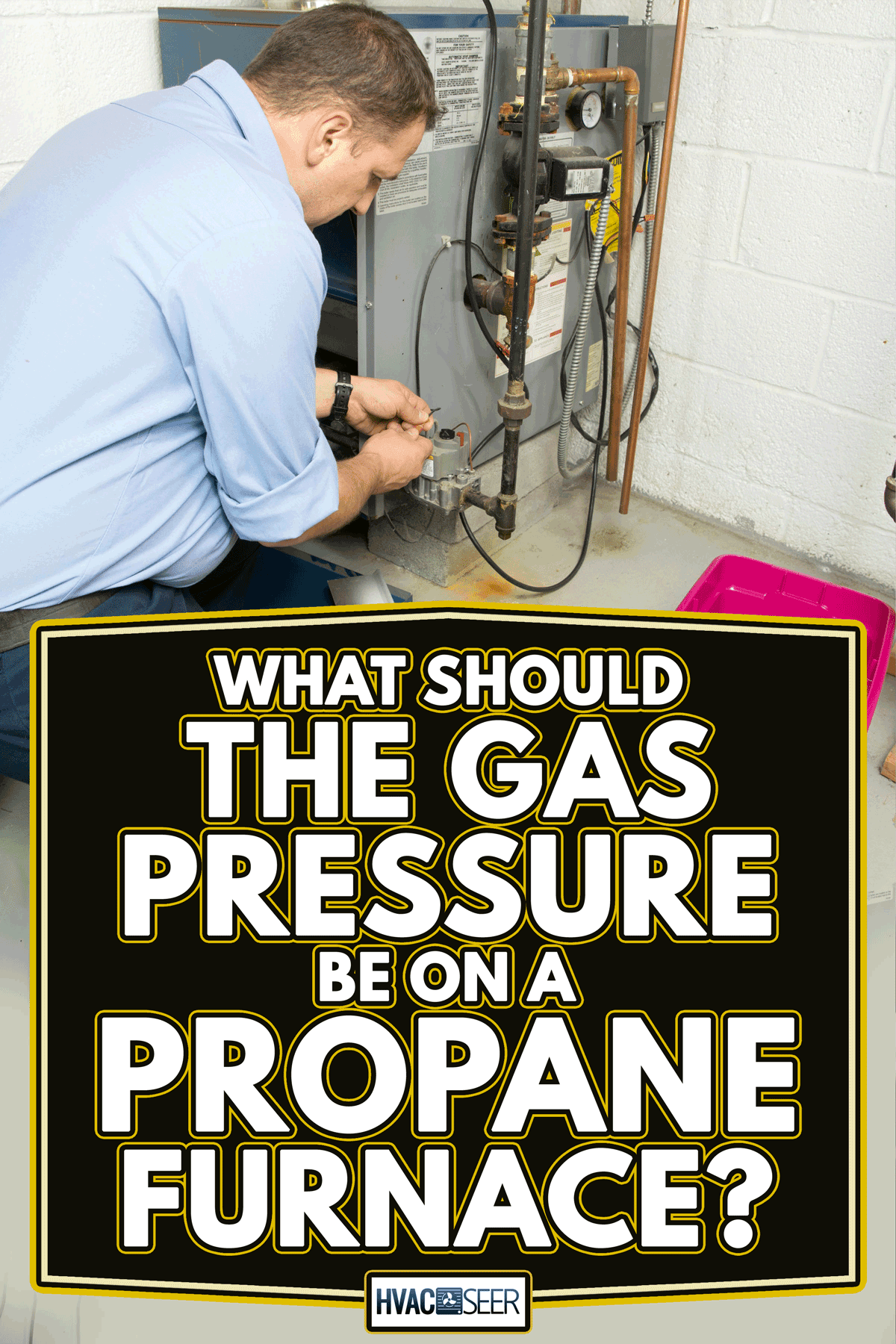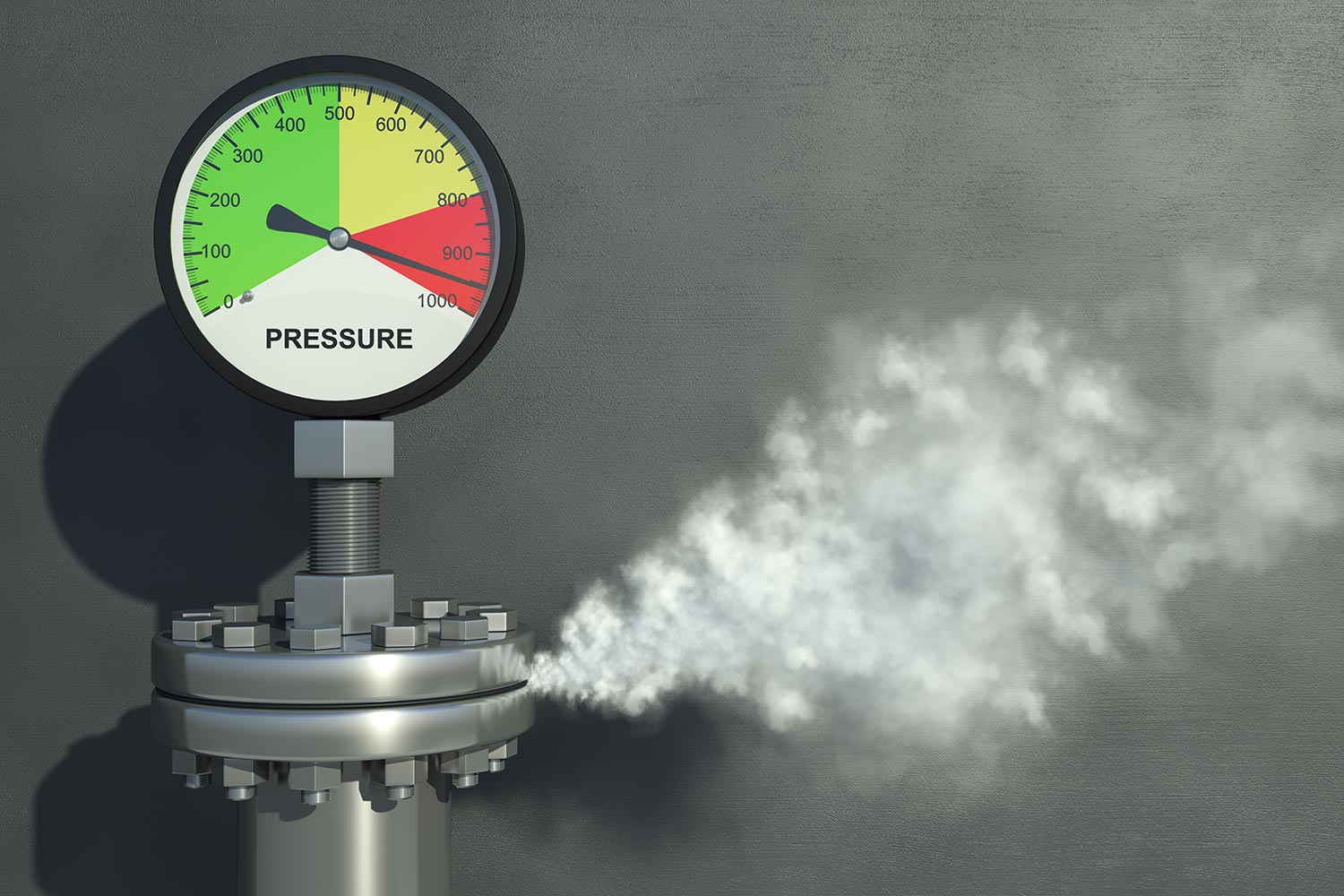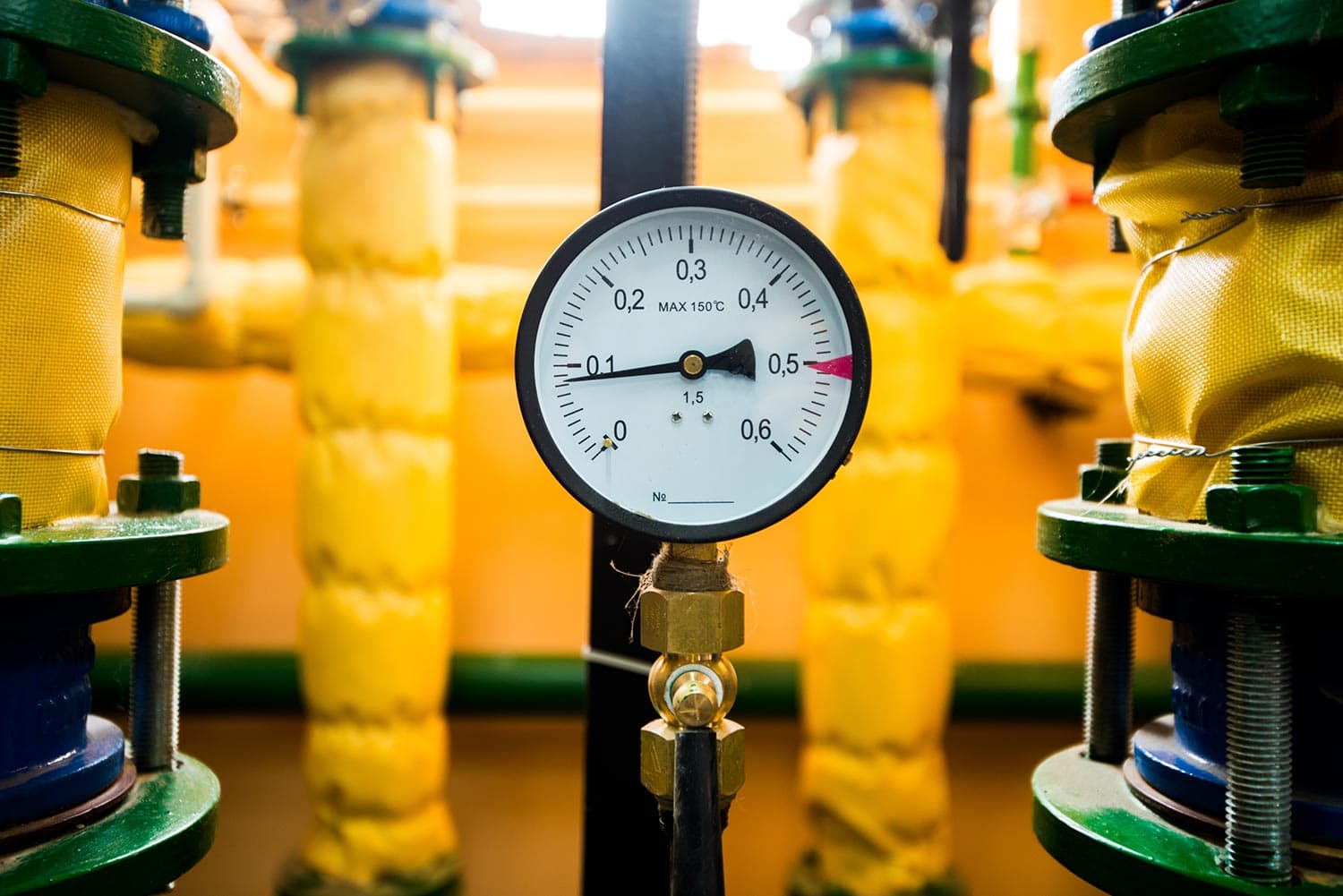To get optimum efficiency from your propane furnace, run it using the right pressure setting. If you just allow it to flow to your tank's combustion chamber straight from the gas supply station without altering the gas pressure, your gas furnace will not work as efficiently as it should. And, the incorrect gas pressure setting will result in your furnace's inability to reach your desired temperature in certain areas in your home and may eventually cause an inevitable breakdown. So what is the best gas pressure setting? We've researched this to get the answer for you!
The ideal manifold pressure should be between 3.2"WC to 3.7"WC.
For two-stage burners:
- it should be 9.7"WC to 10.3WC for High Fire
- it should be 6.7"WC to 7.3"WC for Low Fire
Your propane furnace, when operated consistently with the wrong settings, can lead to serious maintenance issues. That is why it is imperative that you know the proper pressure setting on your gas tank. To keep your home properly heated for a long time, here are some helpful information on how to keep your gas tank running efficiently.

How Do You Check Gas Pressure on a Propane Furnace?
Follow these simple initial tests to determine if you are getting enough gas pressure on your propane tank:
- Check all your gas-operated appliances. If they work, you still have enough gas coming in. The only thing to determine next is if your propane tanks are operating with the right pressure.
- Take a look at your water heater light indicator. If it is on, you are still good to go.
- Operate your stove. If the burners ignite, you have gas coming in.
- Check if you still have hot water.
In order to properly measure the pressure in your gas furnace, you would need a reliable electronic manometer. There are manometers that can provide you with accurate negative and positive pressure readings. The manometer should be attached to the gas valve before you fire up the furnace so that you can set a reference point if you need to adjust the pressure.
See this manometer by Klein Tools on Amazon.
For most propane tanks, there are two spots where you can attach the manometer. The first spot is on the hex screw installed at the tower at the top of the valve. All you have to do is turn the hex screw slightly and install the manometer hose right at the top of the tower. The second spot is the MPT plug which can be found at the outlet area of the valve,
How Do You Adjust The Gas Valve on A Propane Furnace?

Before you begin, you should always make sure that the furnace is turned "Off." Here are the next steps that you can follow after the furnace has been turned off.
Things that you will need:
- Plumber’s tape (vinyl)
- Open-ended wrench
- Owner’s manual
- Manometer
Steps to Adjust the Gas Valve:
- It is very important to always refer to the manufacturer’s manual when making adjustments to your propane furnace pressure. Turn the propane regulator knob to reach the recommended gas pressure.
- Look at the furnace meter box and check the current pressure on the gauge. If it is high, turn the knob clockwise slowly and check the pressure again. If you need to increase the pressure, just turn the knob counterclockwise.
- When you reach the proper amount of pressure, detach the manometer from the valve, use plumber’s tape before you close the opening with the screw and tighten it with a wrench.
What Happens If Gas Pressure Is Too High On A Furnace?

A gradual and tiny increase in propane tank pressure is quite normal. However, when your tank gets over-pressurized, various components can be seriously damaged. When unattended for a long time, it may lead to carbon monoxide poisoning, not to mention a disastrous explosion.
You need to be aware of the many tell-tale signs of propane tank overheating. Some of them include:
- A burning smell that does not subside after 30 minutes
- You can hear an odd humming sound
- The propane furnace automatically shuts down even before it finished a cycle
What Happens If Gas Pressure Is Too Low On A Furnace?

Alternatively, low propane furnace pressure can lead to a cornucopia of issues in your heating system. As a starter, it can leave you with inadequate heating in certain areas of your home. Or, no hot water at all.
On a long-term basis, condensation will form inside your heating system causing corrosion. This will necessitate the untimely and costly replacement of some of the key parts of your heating system, if not the entire set up.
Importance Of Having Your Propane Tanks Regularly Checked

The settings on the pressure of your propane tank can spell the difference between comfortable warmth and the cold and costly cost of replacing your heating system. This is true for both your home and commercial establishments.
From the details that we learned from various sources, too much propane tank heat can lead to valve failures. Too low pressure, on the other hand, can result in corrosion and expensive repairs.
There is also the accumulation of dust in the ducts and air filters. Uncleaned, blocked filters can reduce your propane furnace heating capability. If regularly cleaned and maintained by a professional propane furnace expert, you are assured that your heating system will run smoothly.
Conclusion
Regular maintenance usually involves a thorough check-up of all the functioning parts of your furnace, especially the ones that usually conk out faster such as the heat exchanger, pilot light, and the fan. By having them serviced, you can prevent future costly problems as well as maintain the tiptop efficiency of your heating system.
If you found this article helpful, check out our others related to furnaces:
How Long Do Rheem Furnaces Last?
How Much Space To Leave Around A Furnace?

